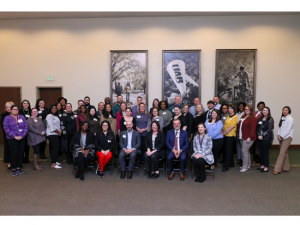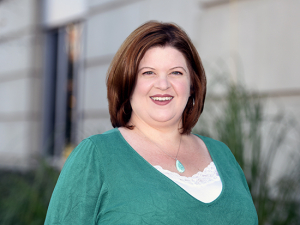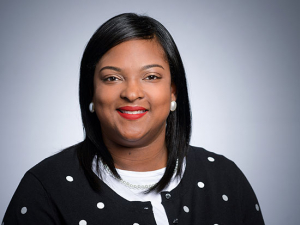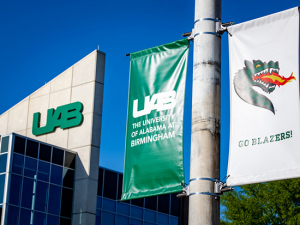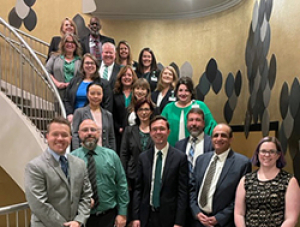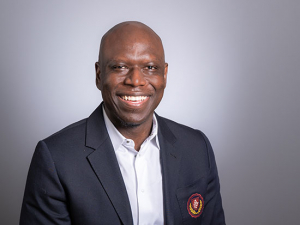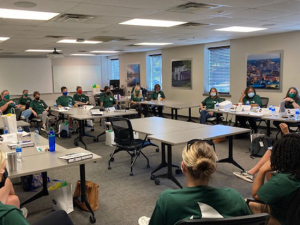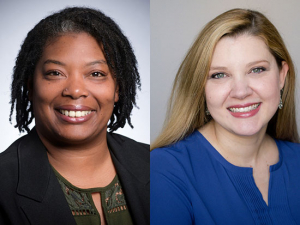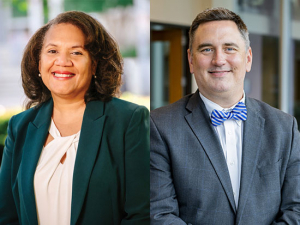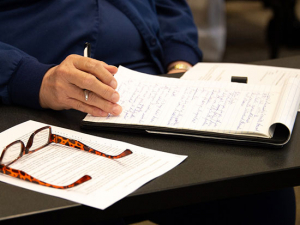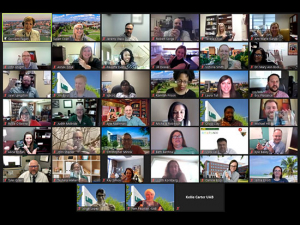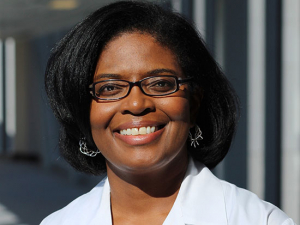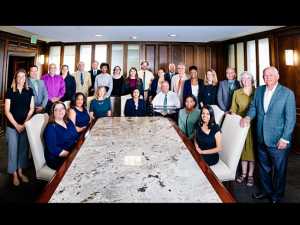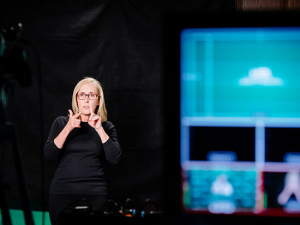Engaging students, faculty and staff and creating a climate conducive to work and learning is a high priority for the School of Nursing.
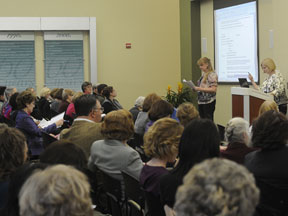 |
| Teena McGuiness, far right, chair of the Nursing Faculty Organization, says the group and the School of Nursing’s leadership constantly communicate with one another in an effort to make the work and learning environment the best it can be. |
The 2010 Faculty and Staff Climate Survey provided an opportunity for the School of Nursing to assess one of its major 2006-11 strategic planning goals — enhancing its work and learning environment.
The survey provided a snapshot of Nursing’s progress and achievements, and the school received high marks overall in all areas when compared to the university and peer institutions where scores were available. Among the school’s achievements were two major accreditations in one year, curricular transformation, re-designation as a WHO Collaborating Center, designation as a VA Nursing Academy, designation as a Paul D. Coverdell Peace Corps Fellow Program and improving its national ranking to No. 21 from No. 26, among other collective accomplishments.
The climate survey marks were high, but that hasn’t stopped the school from continuing to find ways to improve working conditions for faculty and staff. The foundation for this was laid three years ago when then Nursing Faculty Organization (NFO) Chair Erica Pryor, Ph.D., associate professor of nursing, worked to enhance communication with faculty and school leaders. It’s a practice that Teena McGuinness, Ph.D., professor of nursing and NFO chair, continues.
“We always are working on improving communication with faculty and school leaders,” McGuinness says. “In fact, it is the No. 1 goal of our organization.”
The NFO meets regularly to promote the general welfare of students, faculty and staff through curriculum oversight and recommendations for school functions and activities. The organization, which comprises the entire faculty, operates with a framework and by-laws that reflect the dynamic nature of the organization and shared responsibilities for school climate and outcomes. Guidelines and policies from the university and the school’s accrediting body are integral to its work.
The NFO has improved communication using the Web tool Survey Monkey, among other things, to poll faculty on important issues that have work life implications so concerns can be discussed. These items are discussed openly and candidly during its monthly meetings.
“Listening to one another enables faculty to discuss their differences and look for solutions,” McGuinness says. “This is critical. I am convinced that the success of an organization does not reside in actions of individuals but in the relationships among them. Communication is the key.”
The communication is reciprocated.
School of Nursing Dean Doreen Harper, Ph.D., regularly meets informally with faculty and staff, and McGuinness meets monthly with Harper to help identify strategies that are working and provide feedback for improvement processes. The Office of Strategic Marketing and Communications also was established to enhance communication.
Several strategies have been initiated to network students, faculty and staff and inform them of activities that affect the work and learning environment. This helps create a more connected, balanced community and provides timely feedback.
“Our goal is to support faculty and staff, who in turn, support and touch the lives of students,” Harper says. “That faculty and staff commitment ultimately improves the lives of patients and families by providing students with high-quality programs in a supportive learning environment.”
Faculty and school leaders also have improved the school’s work and learning environments by improving school governance, partnerships and efficiency, all with the goal of improving quality and outcomes. The shared-governance model provides opportunities to collaborate, share decisions, promote ownership and engage in the mission and vision of the school.
“Shared governance provides an opportunity for faculty truly to own the curriculum and to use their voices to shape it,” McGuinness says.
Partnering for progress
The climate survey results also led to discussions that more consistency in teaching assignments would help learning.
New faculty workload guidelines have been developed and implemented to improve consistency and predictability for teaching assignments. Team meetings help build more cohesive work groups among students, faculty, staff and students and provide an opportunity to ensure workplace guidelines and processes are consistent, efficient and promote balance. Students also serve on key committees to voice student ideas and recommendations.
McGuinness says enhancing the work and learning environment ultimately benefits students.
“The national need for nurses is growing and so is the diversity of our student population,” McGuinness says. “We have approximately 536 undergraduate students and 1,165 graduate students. The School of Nursing wants faculty and students to represent our state’s and nation’s diverse health-care needs. This requires communication among faculty to best meet the goals of inclusion and high achievement. Our state-of-the-art simulation lab, including simulations in classroom settings and moving away from lecturing exclusively are ways that we are improving our work and learning environment. And it is exciting.”
Planning for the future
School leaders now are in the final stages of revising its Strategic Plan for 2012-17 and are engaging students, faculty, staff, alumni, university, clinical partners and friends in devising goals for success.
A key pillar of this plan focuses on valuing resources — students, faculty and staff — and continuing to improve the work and learning environment of the school.
“Obviously, we’re not perfect, but if we work on communicating with each other and spend the time it takes to do that, things turn out better than if we don’t,” McGuinness says. “This is our work life. We spend many hours a week here. We need to make it a priority to communicate with one another and make our work environment the best we can because that helps our students achieve.”

